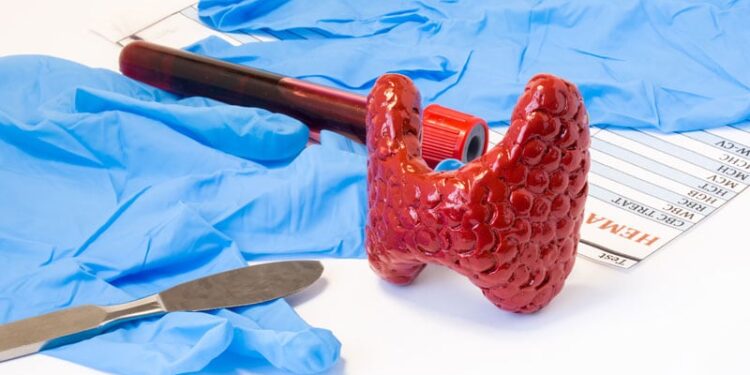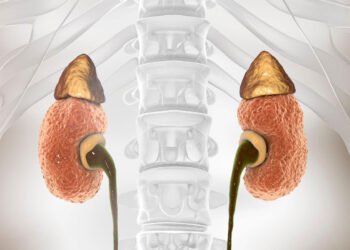TOPLINE:
High baseline parathyroid hormone levels were associated with single-gland disease and successful localization of the affected gland on preoperative imaging, aiding surgical planning for hyperparathyroidism. Additionally, a decline in intraoperative parathyroid hormone levels of < 70% and postoperative serum calcium levels > 10 mg/dL at 6 months predicted the risk for recalcitrant disease despite parathyroidectomy.
METHODOLOGY:
- Monitoring biochemical profiles in patients undergoing surgery for hyperparathyroidism enables surgeons to predict single-gland vs multigland primary hyperparathyroidism and monitor patients at a higher risk for recalcitrant disease.
- Researchers conducted a retrospective cohort study to assess the associations of preoperative imaging localization, intraoperative parathyroid hormone kinetics, and surgical pathology with baseline levels of intact serum parathyroid hormone and to establish independent risk factors for recalcitrant hyperparathyroidism.
- They analyzed data from 1202 adult patients who underwent elective parathyroidectomy for primary hyperparathyroidism between November 2006 and January 2023 at a rural tertiary care center; patients were stratified into two cohorts according to baseline parathyroid hormone levels: low (< 100 pg/mL; n = 536) and high (≥ 100 pg/mL; n = 666).
- Recurrence was defined as hypercalcemia occurring after 6 months of postoperative normocalcemia.
- The analysis included a comparison of preoperative imaging results, surgical pathology findings, intraoperative parathyroid hormone kinetics, and long-term outcomes between the two groups.
TAKEAWAY:
- Among patients with high vs low levels of parathyroid hormone at baseline, preoperative imaging showed higher localization rates (90.8% vs 83.4%; odds ratio [OR], 1.94; 95% CI, 1.30-2.90), and single-gland disease occurred more frequently (89.2% vs 84.9%; OR, 1.47; 95% CI, 1.05-2.06).
- Patients with high baseline parathyroid hormone levels also demonstrated better intraoperative kinetics than those with low baseline parathyroid hormone levels (decline of 70.1% vs 63.6%; difference, 6.5 percentage points; 95% CI, 1.5-11.2 percentage points).
- A postoperative calcium level < 10.0 mg/dL at 6 months and a decline in intraoperative parathyroid hormone levels of > 70% were linked to better recurrence-free survival outcomes.
IN PRACTICE:
“These findings, when applied appropriately, may help surgeons select the optimal surgical approach and provide patients with the best opportunity for a cure while minimizing risk of recalcitrant disease,” the authors of the study wrote.
SOURCE:
The study was led by Ryan N. Hellums, DO, Department of Otolaryngology-Head & Neck Surgery, Geisinger Health System in Danville, Pennsylvania. It was published online in JAMA Otolaryngology-Head & Neck Surgery.
LIMITATIONS:
There may have been surgeon-dependent variability in the use and interpretation of intraoperative parathyroid hormone kinetics. Institutional guidelines for preoperative imaging modalities and intraoperative parathyroid hormone use were absent during most of the study period. The assessment of recurrence was based solely on biochemical profiles rather than pathologic analysis of reoperative cases.
DISCLOSURES:
The authors reported having no relevant conflicts of interest.
This article was created using several editorial tools, including AI, as part of the process. Human editors reviewed this content before publication.
Source link : https://www.medscape.com/viewarticle/monitoring-parathyroid-hormone-guides-parathyroidectomy-2025a1000lr2?src=rss
Author :
Publish date : 2025-08-18 09:27:00
Copyright for syndicated content belongs to the linked Source.











